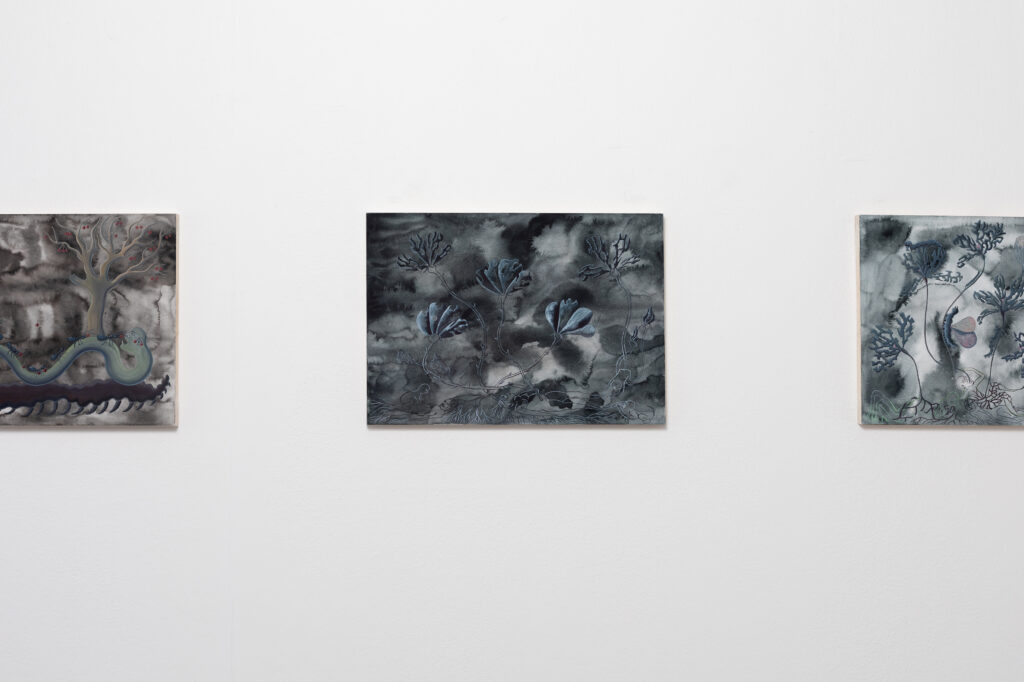






How can we consume the world without devouring ourselves? It is a paradox that cannot be unraveled. Every attempt to look at the world “from the outside” is, in itself, an act of consumption. Everything we perceive immediately enters the cycle of our thoughts, feelings, and the desire to understand.
But what if we tried anyway? What if we attempted to become observers who never touch, never taste, never transform?
From an external perspective, the world doesn’t appear as a network of relationships but as an endless cycle of consumption. The sun burns the atmosphere—nourishing the plants. The soil absorbs remains—recycling leftovers into new life. And humans? They occupy a special place—consuming not only nutrients but also the very essence of the world. They reshape forests into fields, fields into monocultures, and transform natural diversity into efficiency. From an “outside” perspective, it becomes clear that humans are not just consumers but also architects of destruction—reshaping the world according to their needs, regardless of its balance. But is this truly an inevitable part of the cycle?
From the outside, humans, like any other beings, are part of the ecosystem, only equipped with different tools. Every breath, every step is a form of consumption. The idea that we can stand aside and merely “observe” is a myth: even inaction is an act. We are entangled in a network of relationships that constantly surround and change us, just as we change them. When our bodies decompose, when we become part of the compost, there will no longer be any “outside place.” We will nourish what we once sought to control. And only then might we understand that the only way not to consume the world is to become it.
In the deep layers of the soil, plants pass nutrients to each other through intertwined networks. Weaker individuals receive help without expectation of reward. A quiet solidarity that has no hierarchy, no winners or losers—just connections that ensure the survival of the whole.
The world is not only about care and belonging. It is a struggle—a constant game of who will be the eater and who the nourishment. In nature, instincts, speed, and adaptation decide. In human society, this struggle takes a different form: Who sows, reaps, and cooks? And who simply feeds on the fruits of others’ labor?
On a social level, this struggle becomes invisible, hidden in the division of labor. Those who till the soil rarely belong to those who truly profit from its wealth.
Eva Jaroňová’s work reveals two intertwined thematic currents.The first is utopian, where boundaries between humans, nature, and technology blur. A space without hierarchy or strict order, where every being has equal value—human, plant, and digital. This space is not governed by power but by mutual care and connection.
The second current is cynically realistic—here, utopia collides with reality, a world where the exploitation of both living and non-living beings dominates. Humanity, the master of creation, plunders the Earth and, in this irony, becomes a victim of itself. The harsh humor of this perspective confronts us with a question: What if, one day, we are no longer the ones who decide? What if the roles are reversed, and we become what other species exploit?
The author’s themes oscillate between introspective motifs, such as phobias and anxieties, and global issues, including climate change, utopian visions of the future, and feminism. Behind selected works, watercolor paintings unfold, reminiscent of colorful circles of oil on the water’s surface, traces of toxic stains, on which a delicate, detailed drawing emerges – full of unease.
Two dimensions of the same story. We jump between worlds—the micro-balance of care and connection, and the macro-destructive processes of global capitalism. Every decision—what we eat, where and how it was grown—is a political act. In Jaroňová’s work, the soil beneath our feet is not only a source of life but also a mirror of our values. And even if we feel separated from the natural cycles, we are still part of the same process.